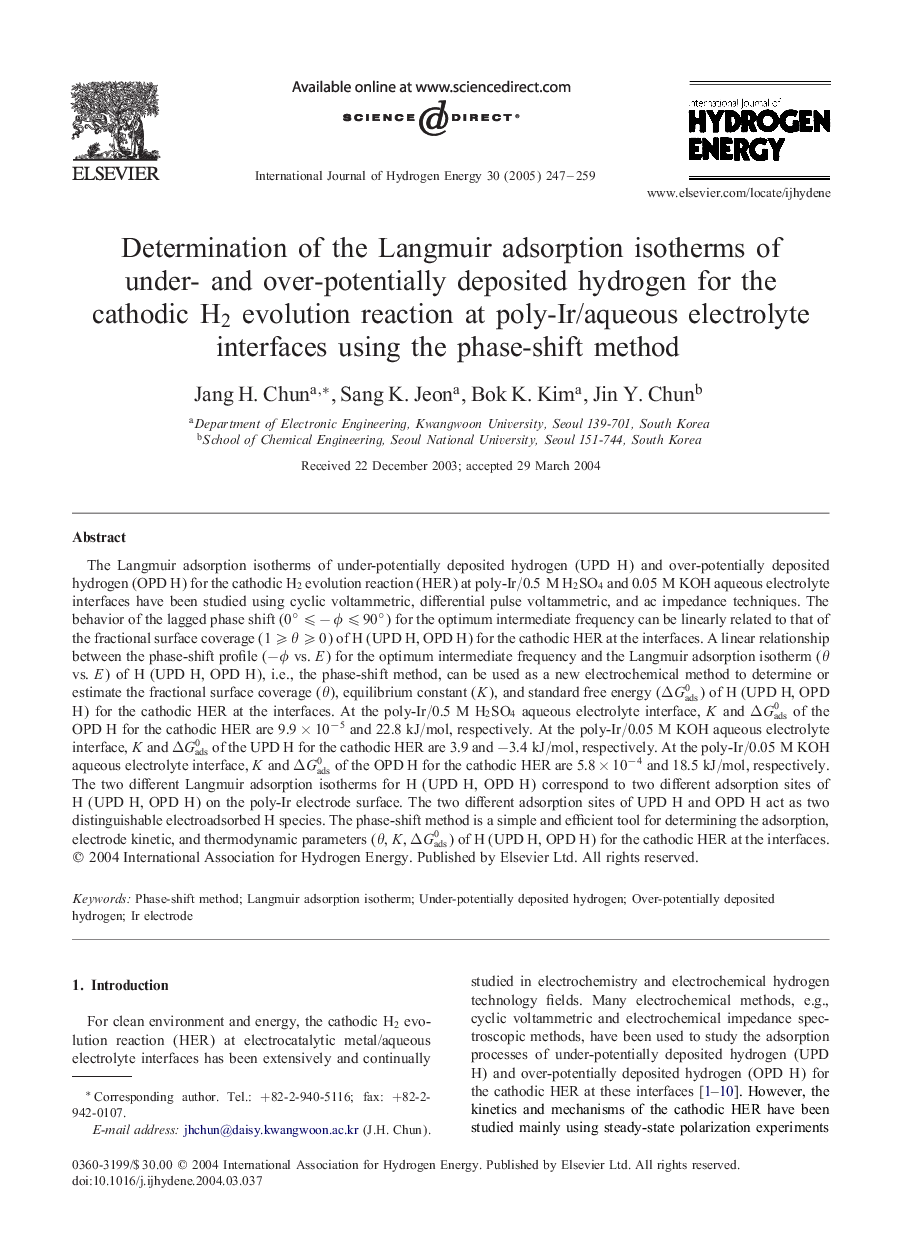| Article ID | Journal | Published Year | Pages | File Type |
|---|---|---|---|---|
| 9759346 | International Journal of Hydrogen Energy | 2005 | 13 Pages |
Abstract
The Langmuir adsorption isotherms of under-potentially deposited hydrogen (UPD H) and over-potentially deposited hydrogen (OPD H) for the cathodic H2 evolution reaction (HER) at poly-Ir/0.5M H2SO4 and 0.05M KOH aqueous electrolyte interfaces have been studied using cyclic voltammetric, differential pulse voltammetric, and ac impedance techniques. The behavior of the lagged phase shift (0°⩽âÏ⩽90°) for the optimum intermediate frequency can be linearly related to that of the fractional surface coverage (1⩾θ⩾0) of H (UPD H, OPD H) for the cathodic HER at the interfaces. A linear relationship between the phase-shift profile (âÏ vs. E) for the optimum intermediate frequency and the Langmuir adsorption isotherm (θ vs. E) of H (UPD H, OPD H), i.e., the phase-shift method, can be used as a new electrochemical method to determine or estimate the fractional surface coverage (θ), equilibrium constant (K), and standard free energy (ÎGads0) of H (UPD H, OPD H) for the cathodic HER at the interfaces. At the poly-Ir/0.5M H2SO4 aqueous electrolyte interface, K and ÎGads0 of the OPD H for the cathodic HER are 9.9Ã10â5 and 22.8kJ/mol, respectively. At the poly-Ir/0.05M KOH aqueous electrolyte interface, K and ÎGads0 of the UPD H for the cathodic HER are 3.9 and â3.4kJ/mol, respectively. At the poly-Ir/0.05M KOH aqueous electrolyte interface, K and ÎGads0 of the OPD H for the cathodic HER are 5.8Ã10â4 and 18.5kJ/mol, respectively. The two different Langmuir adsorption isotherms for H (UPD H, OPD H) correspond to two different adsorption sites of H (UPD H, OPD H) on the poly-Ir electrode surface. The two different adsorption sites of UPD H and OPD H act as two distinguishable electroadsorbed H species. The phase-shift method is a simple and efficient tool for determining the adsorption, electrode kinetic, and thermodynamic parameters (θ, K, ÎGads0) of H (UPD H, OPD H) for the cathodic HER at the interfaces.
Related Topics
Physical Sciences and Engineering
Chemistry
Electrochemistry
Authors
Jang H. Chun, Sang K. Jeon, Bok K. Kim, Jin Y. Chun,
